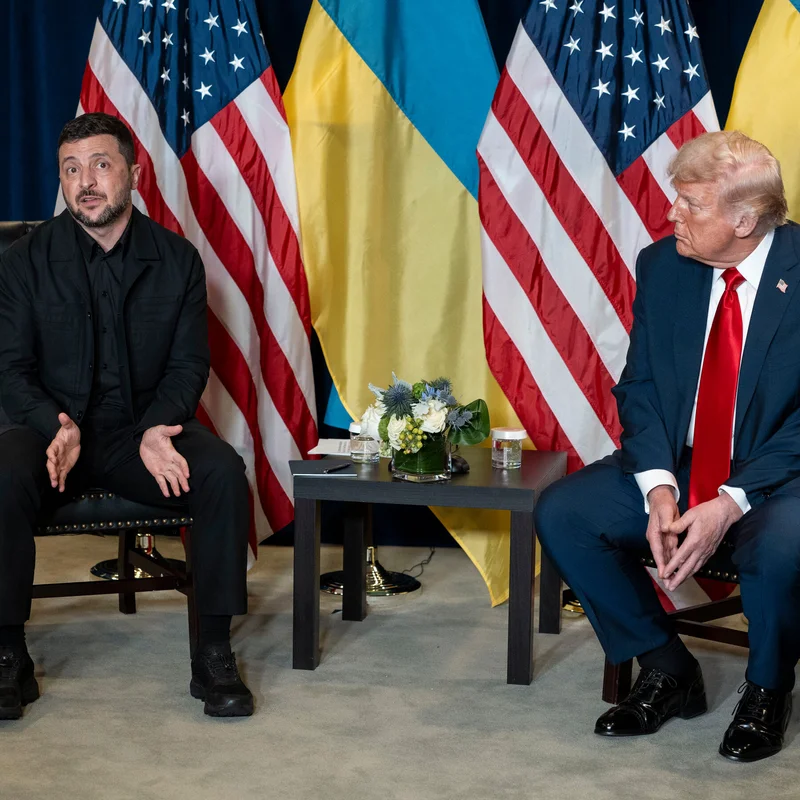Ukrainian President Volodymyr Zelensky delivered a stark warning at the United Nations General Assembly on September 24, 2025, cautioning that the war in Ukraine is accelerating a dangerous new global arms race—one dominated by autonomous drones, AI-guided munitions, and low-cost but high-impact battlefield technologies.
Zelensky’s speech came just one day after former U.S. President Donald Trump unexpectedly declared that Ukraine “could win the war with Russia,” marking a dramatic shift from his previous skepticism about U.S. support for Kyiv. While the comment briefly buoyed Ukrainian morale, many officials in Kyiv remain cautious, viewing it as politically opportunistic rather than policy-driven .
The Rise of the Drone Battlefield
Since Russia’s full-scale invasion in 2022, both Ukraine and Russia have deployed tens of thousands of drones—from commercial quadcopters to long-range kamikaze UAVs. These systems are now central to reconnaissance, artillery correction, and precision strikes, often at a fraction of the cost of traditional weapons.
Zelensky emphasized that this shift is triggering a global scramble: “Every nation is now racing to build, buy, or steal drone capabilities. And the rules haven’t caught up.”
Key Drone Types Reshaping Modern Warfare
- First-Person View (FPV) Drones: Cheap, agile, and lethal—used for anti-tank strikes
- Long-Range Loitering Munitions: e.g., Iranian Shahed-136, Russian Lancet
- Maritime Drones: Ukrainian sea drones have sunk Russian warships in the Black Sea
- AI-Powered Swarm Drones: Emerging tech capable of coordinated attacks
Global Implications: A New Arms Race?
Zelensky urged the U.N. to establish international norms governing autonomous weapons before the technology proliferates uncontrollably. He warned that non-state actors and authoritarian regimes could soon access battlefield AI once reserved for superpowers.
| Country/Region | Drone Developments (2023–2025) | Strategic Goal |
|---|---|---|
| Ukraine | Mass-produced FPV & naval drones; 1M+ units deployed | Asymmetric defense against larger Russian forces |
| Russia | Domestic Lancet production; Iranian & North Korean imports | Offset Western artillery advantage |
| United States | Project Replicator: 1,000+ autonomous systems by 2026 | Counter China & Russia in multi-domain warfare |
| China | Exporting armed drones to Global South; AI swarm R&D | Expand military influence without direct conflict |
“The future of war isn’t tanks or jets—it’s algorithms in the sky.” — Ukrainian Defense Tech Unit
Trump’s Sudden Shift: Hope or Hype?
On September 23, Trump told reporters, “If we give Ukraine the right weapons, they can win—fast.” This contrasts sharply with his 2024 claims that the war was “Europe’s problem.”
Ukrainian analysts are skeptical. “One day he says we can win, the next he says NATO is obsolete,” said Olena Halushka, head of Ukraine’s Anti-Corruption Action Centre. “We need consistent policy—not campaign slogans.”
Still, Zelensky used the moment to appeal directly to American voters: “Your choices in 2026 will decide whether free nations can defend themselves—or surrender to tyranny.”
What This Means for North America
While the drone war rages in Eastern Europe, its ripple effects are reaching North America:
- The U.S. Department of Defense has fast-tracked drone integration into all military branches
- Canada is investing $2.1B in counter-drone defenses for critical infrastructure
- Border agencies are testing drone detection along the U.S.-Mexico frontier
For more on emerging defense tech, explore our deep dive on [INTERNAL_LINK:military-drones-future].
Conclusion: A Call for Global Guardrails
Zelensky’s U.N. address was more than a wartime plea—it was a warning to the world. As drone warfare becomes cheaper, smarter, and deadlier, the absence of international regulation could lead to destabilizing proliferation far beyond Ukraine.
“We are not just fighting Russia,” Zelensky said. “We are fighting for the rules that will govern the wars of tomorrow.”




